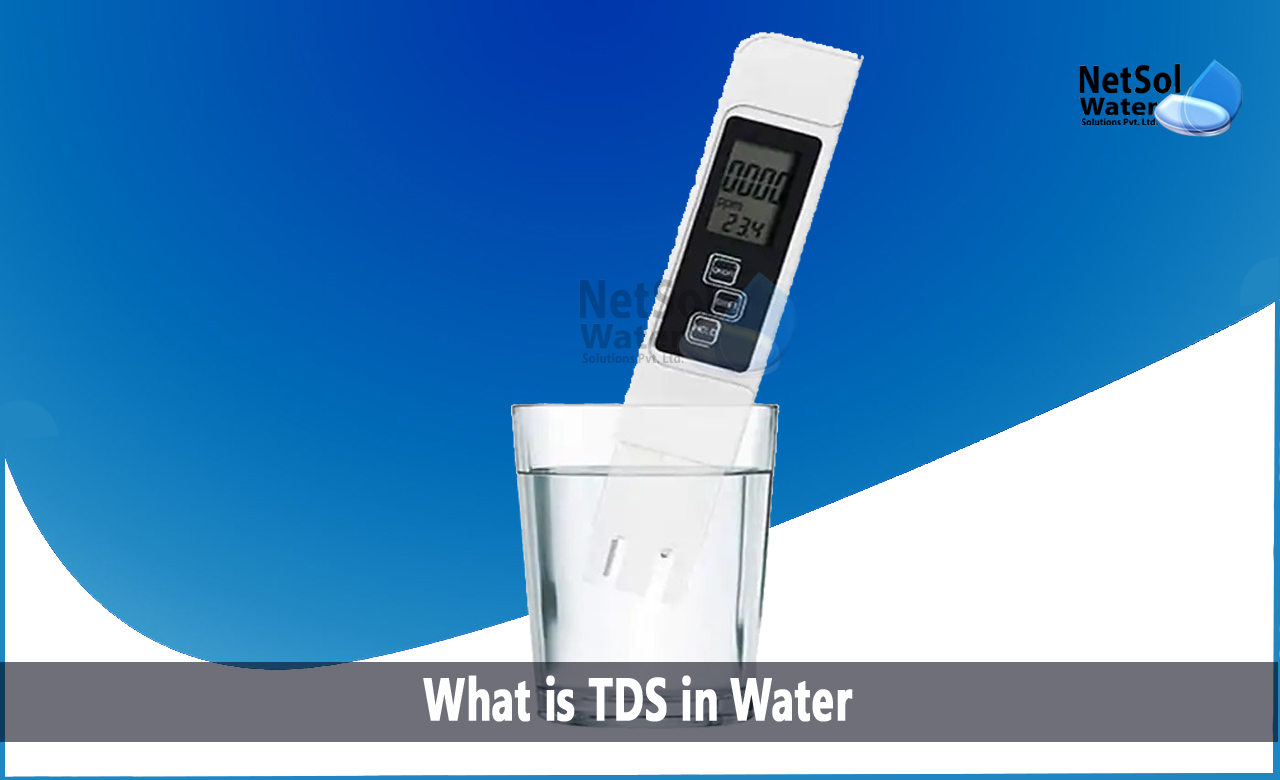The most important resource concern of our lifetime and the lifetime of our children is water. The main indicator of how we live on the land is the state of our waters. Today's water isn't as pure as we would like it to be.
If not properly cleansed, a glass of water can be dangerous due to its pollutants, toxins, and chemicals. Therefore, understanding TDS or total dissolved salt content is essential for comprehending water and its constituent parts.
What is TDS in Water and how to measure in water?
Total Dissolved Solids, or TDS, is a term used to describe the overall concentration of dissolved substances in drinking water. TDS is made up primarily of inorganic salts, while some organic stuff is present as well.
The positively charged cations (calcium, magnesium, potassium, and sodium), and negatively charged anions make up inorganic salts (carbonates, nitrates, bicarbonates, chlorides and sulphates). The quantity of total dissolved solids (TDS) in the water is measured by its TDS level.
TDS in Drinking Water
TDS in drinking water comes from a variety of sources, including sewage, urban runoff, industrial wastewater, water treatment chemicals, chemical fertilizers used in gardens, and plumbing.
Water is a universal solvent that readily attracts contaminants and can quickly absorb and dissolve them. Although, high TDS levels in drinking water are not harmful to health, they do give the water a salty, bitter, or brackish flavour. But, the two minerals that are frequently present in TDS, calcium and magnesium, can result in hard water, the development of scale, and discoloration.
Measurement of TDS level in water
The TDS level can be used to determine if the water is heavily contaminated, needs filtering, or is fit for human consumption. TDS level in water is measured in parts per million (PPM), which is a unit of measurement.
TDS Level Chart for Drinking Water
|
TDS in Water (measured in PPM) |
Suitability for Drinking Water |
|
Between 50-150 |
Excellent for drinking |
|
150-250 |
Good |
|
250-300 |
Fair |
|
300-500 |
Poor, not good for drinking |
|
Above 1200 |
Unacceptable |
|
|
Why is TDS level measured?
Mineral water is naturally tasteless and odourless. When the TDS level fluctuates, the texture and flavour of the water also vary, rendering it unsafe to drink.
You should check the TDS level in your drinking water for a number of reasons, including:
1. Taste: High TDS levels may impart a salty or bitter flavour to the water).
2. Health Issues: Water with high TDS level will not have a huge impact on your health, but the high level of lead or copper can make you fall sick.
3. Cooking: TDS level exceeding 1000 PPM can influence the way the meal tastes.
Conclusion
It's crucial to keep water's TDS level stable. When you can drink safe water, you don't need to bother about filtration and pollutants. Every bottle or jar of treated water is maintained at the appropriate TDS level, ensuring that your body receives the necessary dissolved organic and inorganic salts.
Our focus is on fostering loyalty and preserving water purity. With Netsol Water, water treatment facilities may now be reached with only a click for health, safety, and immunity.
Water treatment plant manufacturer and supplier
Specialized water and wastewater management is necessary because wastewater composition varies, from industry to industry. Therefore, the best method for enhancing water quality is chosen with Netsol Water experts, because every project is unique.



